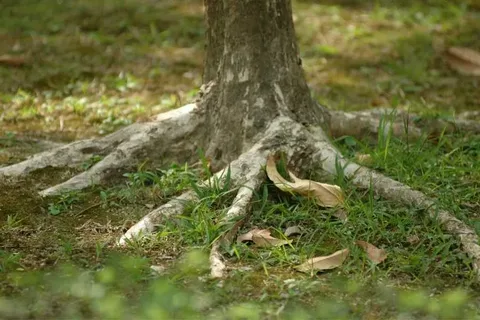Many homeowners enjoy the beauty and shade that trees bring to their property, but what often goes unnoticed is the potential danger lurking underground. Invasive tree roots can pose a significant threat to the structural integrity of your home’s foundation.
Without timely attention, these roots can cause damage that leads to costly repairs and long-term property issues. Recognizing the ways invasive roots interact with soil and structures is essential for homeowners who want to preserve their home’s safety and value.
How Invasive Roots Search for Moisture
Tree roots are naturally programmed to seek out moisture in their environment. When trees are planted too close to a home, their roots often grow aggressively toward sources of water. Cracks in foundations, underground pipes, and even areas with minor moisture accumulation can attract roots.
As roots extend toward these water sources, they can slowly penetrate small openings in the foundation. Over time, this infiltration can cause the foundation to weaken, creating pathways for water to seep into basements or crawl spaces, which further compromises the home’s structure.
The issue becomes more severe when homeowners overlook the early warning signs. Uneven flooring, visible wall cracks, and windows that no longer close properly can all be indicators of root-induced foundation shifts. These symptoms are easy to misinterpret as minor settling when, in reality, the pressure from expanding root systems may be the underlying cause.
Soil Displacement and Foundation Shifting
Invasive tree roots can also indirectly harm a home’s foundation by affecting the stability of the surrounding soil. As roots grow and push through the earth, they can displace significant amounts of soil, gradually altering the ground’s support system. When soil is displaced, it no longer provides even support to the foundation, which can lead to uneven settling.
Some trees can exacerbate this issue by drawing large volumes of moisture from the soil, especially during dry periods. As the soil dries out, it contracts, causing gaps that contribute to further instability. During wet seasons, the soil may suddenly expand again, creating a continuous cycle of shifting pressure against the foundation. These subtle changes often go unnoticed until visible damage becomes apparent, making regular property assessments critical.
The Role of Property Layout in Root Encroachment
The layout of a property can influence how likely invasive roots are to reach a foundation. Trees that are too close to a home provide little buffer space, making it easier for roots to cause damage. Additionally, the type of soil present around the home affects how quickly roots spread. Loose, sandy soils may allow roots to grow faster and reach deeper areas near the foundation. Conversely, clay-heavy soils may cause additional problems when moisture levels fluctuate.
Homeowners who are unsure about the placement of their trees or the type of soil surrounding their homes should consider seeking professional guidance from trusted service providers, like 770-Tree-Guy. Not just that, a certified arborist can provide valuable insights into whether a tree’s root system poses a risk to the foundation. Plus, these service providers usually offer tree removal services. Taking a proactive approach can help prevent the silent progression of structural damage and ensure the long-term safety of the property.
Long-Term Consequences of Root Damage
Allowing invasive tree roots to compromise a foundation can have long-lasting effects on a home. Once the foundation shifts, the structural integrity of the entire house can be at risk. Walls may bow or crack, floors may slope, and doors may become difficult to open. Repairing these issues often requires not just surface-level fixes but more extensive foundation work, which can be both time-consuming and costly.
Even after repairs, the original cause of the damage must be addressed. Removing the problematic tree or its root system may become necessary to prevent future harm. However, simply cutting the tree down does not always eliminate the risk. Remaining roots underground can continue to affect the soil and foundation stability for years to come if not properly managed.
Property owners benefit from understanding that invasive tree roots require consistent monitoring, especially when mature trees are located near homes. By staying aware of potential warning signs and seeking professional evaluations when needed, homeowners can protect their property from the often-overlooked threat of root-related foundation damage.


